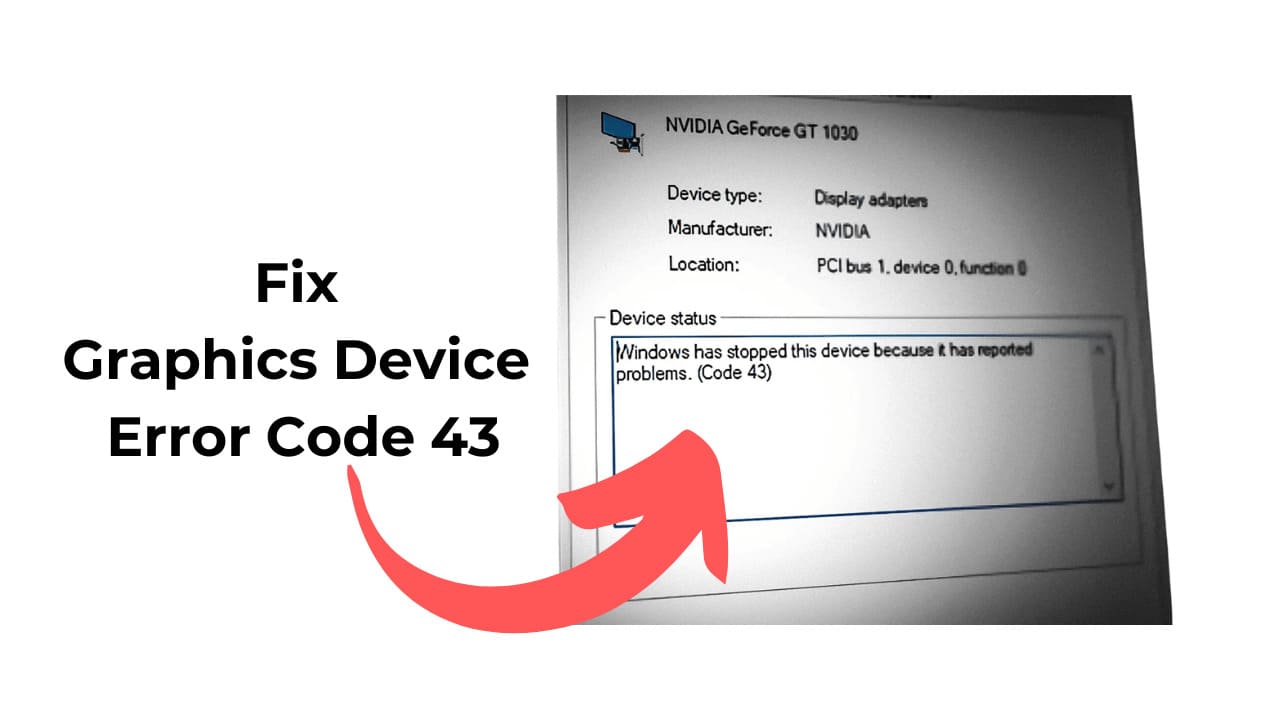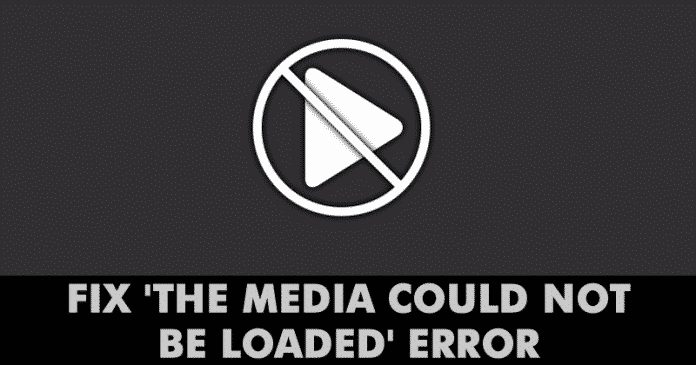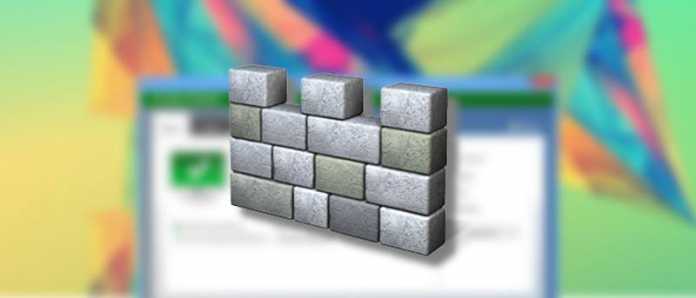What is Tresiba?
If you have diabetes, your doctor may prescribe Tresiba. Tresiba is a prescription drug that’s used to manage blood sugar levels. Tresiba is used in adults and some children to treat type 1 or type 2 diabetes. (If you’d like to learn more about diabetes and how Tresiba is used to treat it, see the “Is Tresiba used for diabetes?” section below.)
Tresiba contains the active drug insulin degludec. It isn’t available in a generic form. Tresiba comes as an injection that you give to yourself. You’ll inject Tresiba under your skin once daily to manage your blood sugar levels all day.
Read on to learn more about how Tresiba works, its side effects, and more.
What are Tresiba’s side effects?
Like most drugs, Tresiba may cause mild or serious side effects. The lists below describe some of the more commonly reported side effects that Tresiba may cause. These lists don’t include all possible side effects.
Also, remember side effects of a drug can depend on:
- your age
- your insulin dosage
- other health conditions you may have
- other medications you may be taking
Your doctor or pharmacist can tell you more about the potential side effects of Tresiba. They can also suggest ways to help reduce side effects.
Mild side effects
Here’s a short list of some of the mild side effects that Tresiba can cause. To learn about other mild side effects, talk with your doctor or pharmacist, or read Tresiba’s prescribing information.
Mild side effects of Tresiba can include:
- diarrhea
- itching and rash at the injection area
- headache
- hypoglycemia (low blood sugar levels)
- upper respiratory infections, such as colds
- weight gain*
Mild side effects of many drugs may go away within a few days or a couple of weeks. But if they become bothersome, talk with your doctor or pharmacist.
* For more information about this side effect, see the “Side effect focus” section below.
Serious side effects
Serious side effects from Tresiba can occur, but they aren’t common. If you have serious side effects from Tresiba, call your doctor right away. But if you think you’re having a medical emergency, you should call 911 or your local emergency number.
Serious side effects can include:
- hypokalemia* (low potassium levels)
- allergic reaction*
- severe hypoglycemia* (very low blood sugar levels)
* For more information about this side effect, see the “Side effect focus” section below.
Side effect focus
Learn more about some of the side effects Tresiba may cause.
Weight gain or weight loss
Taking insulin, such as Tresiba, can cause you to gain weight. In studies, people with type 1 or type 2 diabetes gained weight while taking Tresiba.
Weight loss is not a reported side effect of Tresiba. If you lose weight while taking Tresiba, your doctor may change your treatment plan.
What might help
It’s important to monitor your weight and blood sugar levels while using Tresiba. Changes in your weight (up or down) may mean that your doctor will need to adjust your Tresiba dosage. This change in dosage can help avoid dramatic changes to your blood sugar levels.
Hypokalemia
Like other types of insulin, Tresiba may cause low blood potassium levels (hypokalemia). Taking Tresiba with other medications that also lower blood potassium levels makes your risk for hypokalemia even higher. These medications include certain diuretics used to treat high blood pressure, such as hydrochlorothiazide.
Some signs that your potassium levels may be low include:
- constipation
- fatigue (lack of energy)
- feeling thirsty
- irregular heartbeat
- muscle cramps or twitching
- muscle weakness
What might help
Your doctor will do blood tests to check your potassium levels. They will also make sure your heart rhythm is normal. If your potassium levels are low, your doctor can develop a treatment plan to bring your potassium levels back to normal.
Hypoglycemia
Like other types of insulin, Tresiba can cause hypoglycemia, which is a drop in your blood sugar levels. Several other factors can also cause your blood sugar levels to drop, such as:
- changes to your diet or exercise routine
- taking other blood sugar medications
- changes to your Tresiba dosage
To avoid drops in your blood sugar levels, it’s important to monitor your levels on a regular schedule as directed by your doctor.
In studies, some people taking Tresiba to manage type 1 or type 2 diabetes had episodes of hypoglycemia. Hypoglycemia is a common reaction among some people using insulin. Talk with your doctor about your risk for having hypoglycemia while taking Tresiba.
Signs of hypoglycemia include:
- blurred vision
- confusion
- dizziness
- heart palpitations (fast or irregular heartbeat)
- nausea
- shakiness
- slurred speech
- skin tingling
If your blood sugar levels drop very low and you don’t get treatment, you could faint or have a seizure. Or, in severe situations, you could go into a diabetic coma.
What might help
Try to maintain steady blood sugar levels while on Tresiba. To do this, be sure to monitor your blood sugar levels regularly. You’ll also need to manage your diet carefully. This will help you avoid big increases or drops in your blood sugar levels.
In case your blood sugar levels do drop, you should know the signs of low blood sugar and what to do. If you notice these signs (see list above) and they are mild, follow the 15-15 rule. This means to eat or drink 15 grams of easy-to-digest carbohydrates to help raise your blood sugar levels. (Carbohydrates are nutrients found in food or your body that are made up of sugar, starch, and fiber.)
You should then check your blood sugar after 15 minutes. Repeat until your sugar levels stabilize to about 70 milligrams/deciliter (mg/dL).
Examples of foods or drinks containing 15 grams of carbohydrates include:
- 4 or 5 saltine crackers
- 1 tablespoon of sugar
- 1 tablespoon of honey
- ½ cup of juice
If following the 15-15 rule does not raise your levels toward 70 mg/dL or your symptoms are not improving, call 911 or your local emergency medical services. Your blood sugar levels will need to be managed by a healthcare professional. In cases of severe hypoglycemia, glucagon may be given to raise blood sugar levels quickly. Ask your doctor for more information.
Allergic reaction
Some people may have an allergic reaction to Tresiba. Symptoms of a mild allergic reaction can include:
- rash
- itchiness
- flushing (warmth, swelling, redness, or discoloration in your skin)
A more severe allergic reaction is rare but possible. Symptoms of a severe allergic reaction can include swelling under your skin, typically in your eyelids, lips, hands, or feet. They can also include swelling of your tongue, mouth, or throat, which can cause trouble breathing.
Call your doctor right away if you have an allergic reaction to Tresiba. But if you think you’re having a medical emergency, call 911 or your local emergency number.
How is Tresiba taken?
Your doctor will explain how you should take Tresiba. They will also explain how much to take and how often. Be sure to follow your doctor’s instructions. Below are commonly used dosages, but always take the dosage your doctor prescribes.
Taking Tresiba
Tresiba comes in injectable Flex-Touch pens and as a multi-dose vial. You’ll inject Tresiba under the skin in your arm, thigh, or belly once daily. Be sure to rotate your injection sites. Using the same location could cause injection site problems, such as fat accumulation under your skin.
Dosage
The dosage of Tresiba your doctor prescribes will depend on:
- whether you’ve been on insulin before or are switching from another type of insulin to Tresiba
- the type of diabetes you have
- your weight
- other medications you’re taking
- your overall health
Tresiba comes in prefilled injection pens in two different strengths. It also comes in multiple-dose insulin vials used with separate insulin syringes. Check that the dose of Tresiba is correct each time you use it.
Depending on whether you’ve used insulin before, your doctor may start you on a low dose. They’ll adjust your dose slowly until you reach your blood sugar goals. There is no maximum dose of insulin per day.
Tresiba dosage charts
| Type 1 diabetes | ||
| Person receiving Tresiba | Starting dose | When it’s taken |
| adults and children using insulin for the first time | Your doctor will generally start Tresiba at one-third to one-half of your total daily insulin dose based on your body weight. For the remainder of your total daily insulin dose, you should take a short-acting insulin in divided doses at mealtimes. | once daily |
| children ages 1 year and older who are already using insulin | The starting dose of Tresiba is 80% of the total unit dose of the long-acting or intermediate-acting insulin that you’re already using. Your doctor will adjust your dose as needed until your blood sugar is under control. | once daily |
| adults already using insulin | Your doctor will start Tresiba at the same total daily dose of long-acting or intermediate-acting insulin that you’re already taking. | once daily |
| Type 2 diabetes | ||
| Person receiving Tresiba | Starting dose | When it’s taken |
| adults and children using insulin for the first time | 10 units | once daily |
| children ages 1 year and older who are already using insulin | The starting dose of Tresiba is 80% of the total unit dose of the long-acting or intermediate-acting insulin that you’re already using. Your doctor will adjust your dose as needed until your blood sugar is under control. | once daily |
| adults already using insulin | Your doctor will start Tresiba at the same total daily dose of long-acting or intermediate-acting insulin that you’re already taking. | once daily |
Be sure to store your insulin properly. Also, keep track of the date you first opened a new Tresiba pen or vial. Expired Tresiba should be thrown away in an appropriate way. Ask your pharmacist for more information on the best ways to store and dispose of Tresiba.
For information about how long you can use Tresiba once it’s been opened, see the “Ask a pharmacist” section below.
Taking Tresiba with other drugs
You may need to use Tresiba with other medications to control your blood sugar levels.
If you have type 1 diabetes, your doctor may prescribe Tresiba with another type of insulin that is short acting. This type of insulin starts to work faster than long-acting insulin. Short-acting insulin is generally taken about 30 minutes before meals to better manage increases in your blood sugar after meals.
If you have type 2 diabetes, your doctor may prescribe other oral medications. You’ll take these with Tresiba to manage your blood sugar levels.
If you have questions about taking other drugs with Tresiba, talk with your doctor.
Questions about taking Tresiba
Below are answers to some questions you may have about taking Tresiba.
- What if I miss a dose of Tresiba? If you miss a dose of Tresiba, take it as soon as you remember. But make sure there are at least 8 hours between doses. Never take two doses of Tresiba at the same time. This can lower your blood sugar to dangerous levels.
- Will I need to use Tresiba long term? If Tresiba is working to manage your blood sugar levels, your doctor may recommend taking it long term. Talk with your doctor about managing your diabetes and how long you’ll need to take Tresiba.
- Should I take Tresiba with food? Tresiba can be taken with or without food. But try to take it at your scheduled time every day to avoid major changes in your blood sugar levels.
- How long does Tresiba take to work? Tresiba starts working about an hour after you inject the drug, and it works all day. You should notice a change in your blood sugar levels about an hour after taking your dose.
Questions for your doctor
You may have questions about Tresiba and your treatment plan. It’s important to discuss all your concerns with your doctor.
Here are a few tips that might help guide your discussion:
- Before your appointment, write down questions like:
- How will Tresiba affect my body, mood, or lifestyle?
- Bring someone with you to your appointment if doing so will help you feel more comfortable.
- If you don’t understand something related to your condition or treatment, ask your doctor to explain it to you.
Remember, your doctor and other healthcare providers are available to help you. And they want you to get the best care possible. So, don’t be afraid to ask questions or offer feedback on your treatment.
What are some frequently asked questions about Tresiba?
Find answers to some commonly asked questions about Tresiba.
Is Tresiba similar to Lantus or Toujeo?
Tresiba, Lantus, and Toujeo are all long-acting insulins you inject under your skin once per day, but they have different active ingredients. The active drug in Tresiba is insulin degludec, while Lantus and Toujeo each contain insulin glargine.
All three of these types of insulin are used to manage both type 1 and type 2 diabetes. They have some similar side effects, but they also have some differences.
Studies were done to compare insulin degludec (Tresiba) and insulin glargine (Lantus and Toujeo). All three drugs were found effective in managing type 1 or type 2 diabetes with once-a-day use.
All three medications come in multi-dose vials and prefilled pens. But the age ranges of people they’re prescribed for vary:
- Tresiba is used for both type 1 and type 2 diabetes in children ages 1 year and older and in adults.
- Toujeo is used for both type 1 and type 2 diabetes in children ages 6 years and older and in adults.
- Lantus is used for type 1 diabetes in children ages 6 years and older and in adults.
- Lantus is used for type 2 diabetes in adults only.
All three medications are brand-name drugs. They do not come in a generic form.
Similar side effects have been reported with all three drugs. Common side effects include diarrhea and headache, as well as swelling in the feet, legs, and ankles. Some serious side effects include hypoglycemia, hypokalemia, and severe allergic reaction.
Is Tresiba a long-acting insulin?
Yes, Tresiba is a long-acting type of insulin. You’ll need to take only one dose per day to manage your blood sugar levels. This is unlike short-acting insulin, which needs to be taken several times per day.
Does Tresiba cause any eye-related side effects?
There are no reported eye-related side effects with Tresiba use. But people with diabetes can have problems with their eyes.
This damage can cause problems such as blurry vision. It can also lead to conditions including glaucoma (pressure in the eye) and diabetic retinopathy (damage to the retina).
If you have diabetes, be sure to get regular eye exams to make sure it isn’t affecting your eye health.
What does Tresiba cost?
Costs of prescription drugs can vary depending on many factors. These factors include what your insurance plan covers and which pharmacy you use. To find current prices for Tresiba pens or vials in your area, visit GoodRx.com.
If you have questions about how to pay for your prescription, talk with your doctor or pharmacist. You can also visit the Tresiba manufacturer’s website to see if it offers any support options.
Is Tresiba used for diabetes?
Tresiba is used to manage blood sugar levels in people with type 1 or type 2 diabetes. It’s prescribed for use in children ages 1 year and older and in adults. With type 1 diabetes, your body doesn’t make insulin. With type 2 diabetes, your body doesn’t make enough insulin to control your blood sugar levels. Tresiba treats type 1 and type 2 diabetes by working like natural insulin. Once you inject Tresiba, the insulin is absorbed into your blood and works to control your sugar levels.
Tresiba may be used with other diabetes medications. It may be combined with short-acting insulin for type 1 diabetes and with oral medication for type 2. If you have questions about your treatment plan for managing diabetes, talk with your doctor.
What should be considered before taking Tresiba?
Before taking Tresiba, be sure to talk with your doctor about any medical conditions you may have. Ask your doctor to explain the benefits and risks of Tresiba treatment. If you have kidney or liver problems, or are pregnant or breastfeeding, ask if it’s safe for you to take Tresiba.
Do not use Tresiba if you’re allergic to any of the ingredients in Tresiba.
Interactions
Taking medications, vaccines, foods, and other things with a certain drug can affect how the drug works. These effects are called interactions.
Before taking Tresiba, be sure to tell your doctor about all medications you take (including prescription and over-the-counter types). Also, describe any vitamins, herbs, or supplements you use. Your doctor or pharmacist can tell you about any interactions these items may cause with Tresiba.
Interactions with drugs or supplements
Tresiba can interact with several types of drugs.
Examples of these drugs include:
-
Thiazolidinediones. Tresiba interacts with a class of diabetes drugs called thiazolidinediones. Using Tresiba with these drugs increases your risk for heart failure. Symptoms of heart failure include shortness of breath, tiredness, and swollen legs, ankles, or feet.
- pioglitazone (Actos)
- rosiglitazone (Avandia)
-
Antidepressants. Some antidepressant medications can increase the risk of hypoglycemia if taken with Tresiba. Examples include drugs such as:
- fluoxetine (Prozac, Sarafem)
- isocarboxazid (Marplan)
- monoamine oxidase inhibitors (MAOIs) such as phenelzine (Nardil)
-
Corticosteroids. Taking corticosteroids with Tresiba can raise your blood sugar levels. If you take Tresiba with corticosteroids, you’ll need to monitor your blood sugar levels carefully to manage spikes. Your doctor or pharmacist can explain the best way to take all your medications. Examples of corticosteroids include:
- methylprednisolone
- prednisone
-
HIV medications. Certain types of HIV medications called protease inhibitors can raise blood sugar levels when taken with Tresiba. Examples of these drugs include:
- atazanavir (Reyataz)
- darunavir (Prezista)
- fosamprenavir (Lexiva)
- ritonavir (Norvir)
-
Other diabetes medications. Taking Tresiba with other diabetes medications could lower your blood sugar levels too much (hypoglycemia). You’ll need to monitor your blood sugar levels carefully to avoid dips in your levels. Some examples of diabetes medications include:
- canagliflozin (Invokana)
- dapagliflozin (Farxiga)
- exenatide (Byetta, Bydureon)
- linagliptin (Tradjenta)
- liraglutide (Victoza, Saxenda)
This list does not contain all types of drugs that may interact with Tresiba. Your doctor or pharmacist can tell you more about these and other interactions that may occur with Tresiba.
Warnings
Tresiba may not be right for you if you have certain medical conditions or other factors that affect your health. Talk with your doctor about your health history before you take Tresiba. Factors to consider include those in the list below.
- Kidney or liver disease. Tresiba can cause low blood sugar levels. If you have kidney or liver problems, the risk for low blood sugar levels may be higher. If you have either of these conditions, your doctor may need to adjust your dose of Tresiba. Ask your doctor what you should know about managing your diabetes with Tresiba.
- Allergic reaction. If you’ve had an allergic reaction to Tresiba or any of its ingredients, you shouldn’t take Tresiba. Ask your doctor what other medications might be better options for you.
- Pregnancy. It’s not known how safe it is to use Tresiba during pregnancy. For more information, see the “Pregnancy and breastfeeding” section below.
- Breastfeeding. It’s not known how safe it is to use Tresiba if you’re breastfeeding. For more information, see the “Pregnancy and breastfeeding” section below.
Use with alcohol
If you’re using Tresiba to manage your blood sugar levels, drinking alcohol may increase your risks for poor blood sugar control. You shouldn’t drink alcohol with Tresiba for the following reasons:
- Alcohol may lower your blood sugar levels too much (hypoglycemia).
- Alcohol can also prevent your liver from managing your blood sugar.
Ask your doctor about the risks of drinking alcohol while taking Tresiba.
Pregnancy and breastfeeding
It isn’t known whether Tresiba is safe to use during pregnancy or while breastfeeding. If you have type 1 or type 2 diabetes, your blood sugar levels may change during pregnancy. Having uncontrolled blood sugar levels during pregnancy can be a serious risk for both you and your unborn child.
Be sure to talk with your doctor about whether you should take Tresiba if you are pregnant. Also, ask about ways to keep your blood sugar under control during pregnancy.
It’s not known whether Tresiba passes into breast milk or how it may affect a child who is breastfed. Talk with your doctor about the risks and benefits of using Tresiba while breastfeeding.
What should be done in case of overdose?
Don’t take more Tresiba than your doctor prescribes. Using more than this can lead to serious side effects. Be sure to ask your doctor what you should do if your blood sugar levels rise or fall too much.
Symptoms of overdose
Symptoms of an overdose with Tresiba can include low blood sugar levels (hypoglycemia) and low potassium levels (hypokalemia).
Hypoglycemia
Having very low blood sugar levels (hypoglycemia) is a serious condition that can cause various symptoms, including:
- headache
- dizziness
- sweating
- confusion
- seizures
- loss of consciousness
- coma
If you think you have very low blood sugar, check your level with a blood glucose monitor. The American Diabetes Association recommends following the 15-15 rule to raise blood sugar. Take 15 grams of carbohydrates to raise your blood sugar levels and check your sugar after 15 minutes. (Carbohydrates are nutrients found in food or your body that are made up of sugar, starch, and fiber.)
Examples of foods or drinks containing 15 grams of carbohydrates include ½ cup fruit juice, 2 tablespoons raisins, or 1 tablespoon jam or jelly. If your blood sugar levels don’t respond after 15 minutes, take 15 more grams of carbohydrates and check again in 15 minutes.
If your blood sugar levels don’t improve, call 911 or get emergency medical help right away. In cases of severe hypoglycemia, glucagon is given to raise blood sugar levels quickly. Ask your doctor for more information.
You may find these tips useful for managing low blood sugar.
Hypokalemia
Low potassium levels in the blood (hypokalemia) can cause various symptoms. These include:
- constipation
- muscle cramping
- weakness
- heart palpitations (irregular heartbeat)
What to do in case you take too much Tresiba
Call your doctor if you think you’ve taken too much Tresiba. You can also call 800-222-1222 to reach the American Association of Poison Control Centers, or use its online resource. But if you have severe symptoms, immediately call 911 (or your local emergency number) or go to the nearest emergency room.
What to ask your doctor
Today, there are several medication options available for managing type 1 and type 2 diabetes, including Tresiba. Before taking Tresiba, talk with your doctor about what you can expect with treatment.
Here are some suggested questions to start your conversation:
- Which form of Tresiba would be best for me, the prefilled injection pen or the vial?
- How will I be able to tell if Tresiba is working for me?
- Will I lose weight with Tresiba?
- How can I manage sudden changes in my blood sugar levels while taking Tresiba?
- Are there any alternative therapies for diabetes that I should consider?
If you’re new to using insulin to manage your blood sugar, these tips may be helpful. To learn more about diabetes, you can sign up for Healthline’s type 1 and type 2 diabetes newsletters.
Ask a pharmacist
Q:
How long is Tresiba useable once it’s been opened?
Anonymous patient
A:
You shouldn’t use vials of Tresiba 56 days (8 weeks) from the date you first opened them. In fact, both Tresiba FlexTouch pens and vials should be discarded after 56 days of being opened. At that time, a new pen or vial should be used.
Tresiba is considered expired once it’s been opened for 56 days. This includes Tresiba vials and pens that have:
- been kept at room temperature or refrigerated, or
- not yet reached the expiration date on the drug’s package
Expired Tresiba may not properly treat your diabetes. And using expired Tresiba also increases your risk for side effects from the drug. To keep track of the expiration date once you’ve opened Tresiba, you can add a reminder to your calendar or use an app on your phone to help you remember.
Victor Nguyen, PharmD, MBAAnswers represent the opinions of our medical experts. All content is strictly informational and should not be considered medical advice.

Disclaimer: Healthline has made every effort to make certain that all information is factually correct, comprehensive, and up-to-date. But this article should not be used as a substitute for the knowledge and expertise of a licensed healthcare professional. You should always consult your doctor or other healthcare professional before taking any medication. The drug information contained herein is subject to change and is not intended to cover all possible uses, directions, precautions, warnings, drug interactions, allergic reactions, or adverse effects. The absence of warnings or other information for a given drug does not indicate that the drug or drug combination is safe, effective, or appropriate for all patients or all specific uses.














